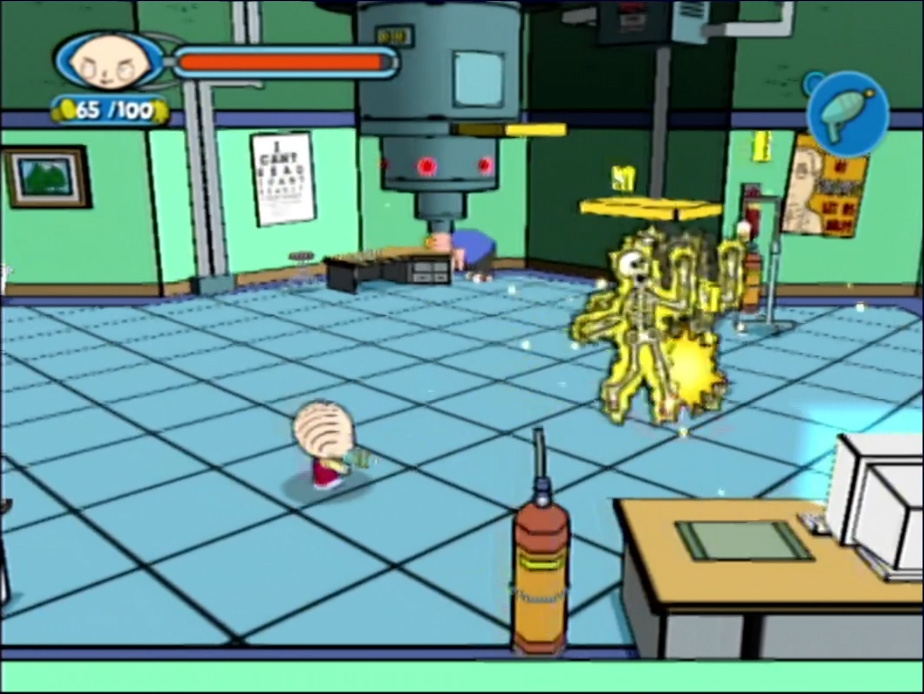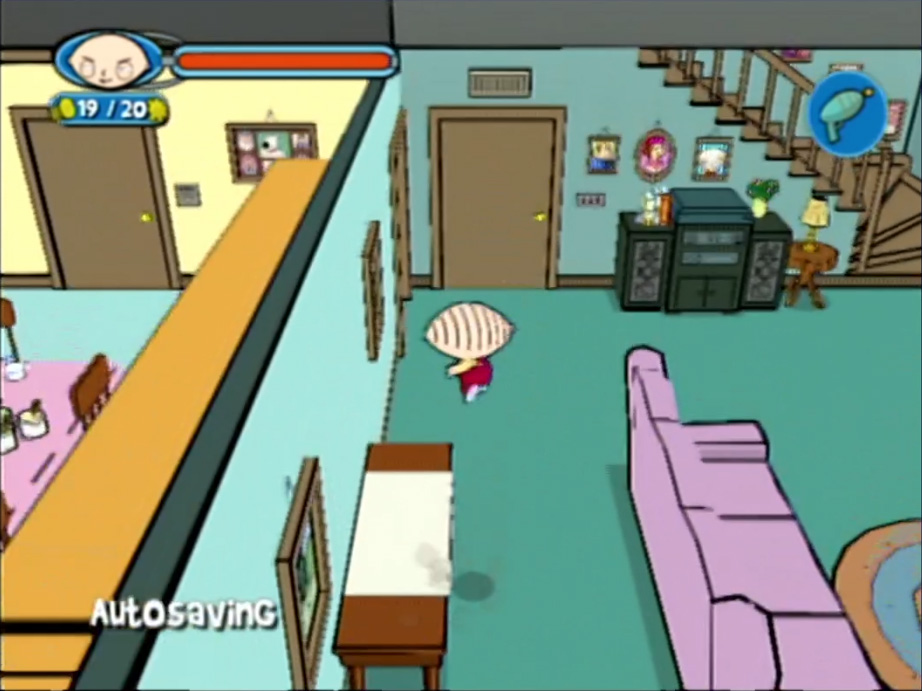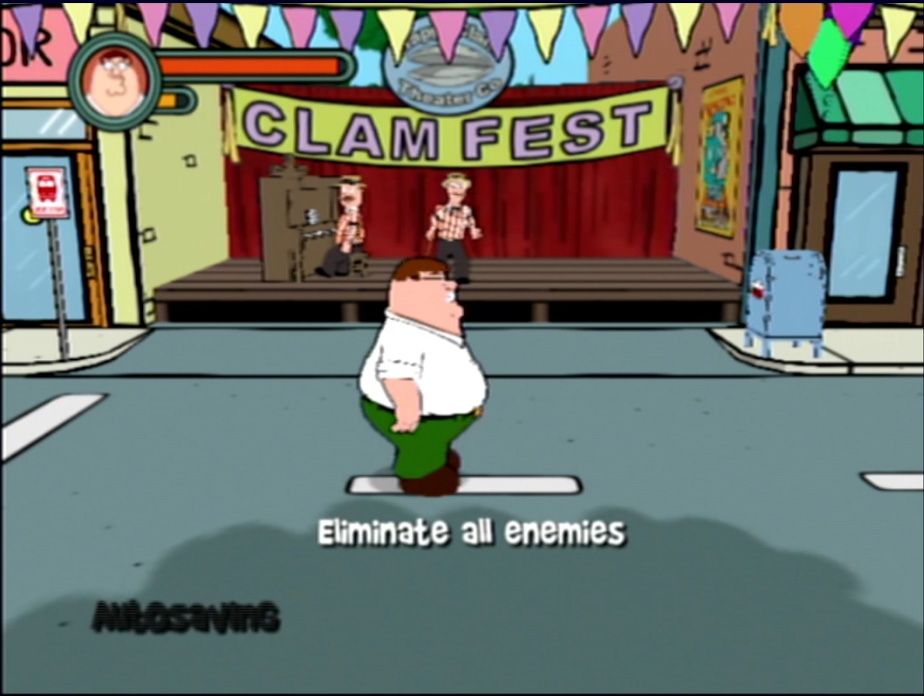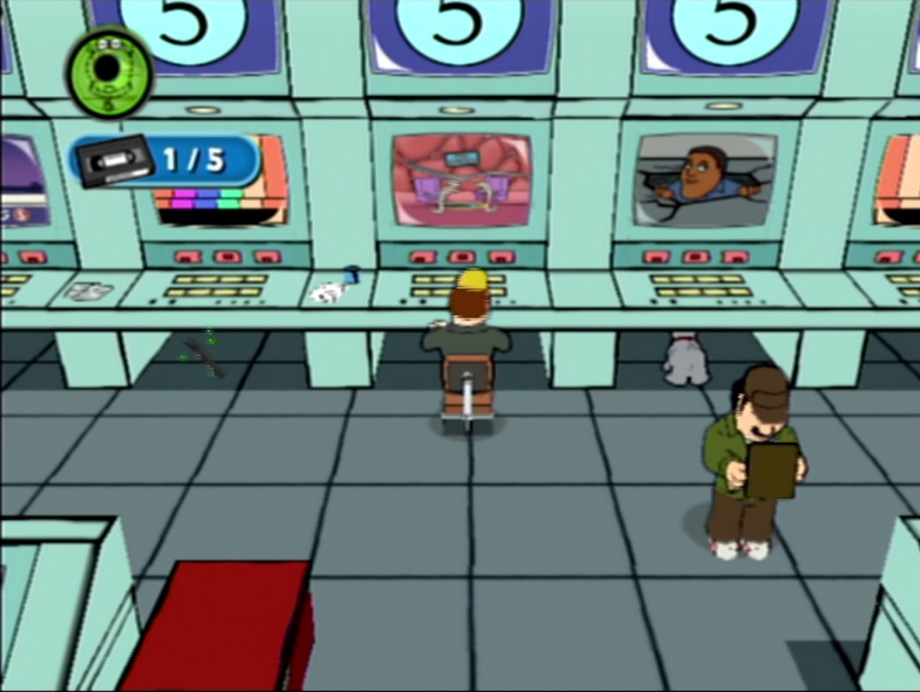As most of you probably already know, I’m a huge fan of the tv show “Family Guy”. I don’t know why, but I just love the mixture of very dull and very profound humor – more than the competition from, for example, “The Simpsons”. This article is not supposed to be about the show, but about the video game of the same name – does it get me hooked just like the show?
My original idea was to compare the “Simpsons” game, which we played some time ago, and the “Family Guy” game and, in a completely unbiased manner, clearly identify the latter as the winner. However, this fails because of two things: on the one hand, I have never written an article about the “Simpsons” game, on the other hand, the two games are difficult to compare due to the different genres – that of “Family Guy” is of course the better one.

But let’s do a serious assessment. There are many games from both tv shows, this article is about the “Family Guy Video Game!” released for the PlayStation 2 from 2006. Officially it’s an action-adventure and platformer game, but that’s a bit more complicated – more on that in a moment.
Of course, given its age and target platform, don’t expect HD graphics, but by PS2 standards it’s definitely reasonable. I don’t really like the heavy use of cell shading in graphics, but it fits here very well. It recreates the show as it was in the early seasons precisely. Otherwise there isn’t much to say about the technology, the game ran stably, we had neither bugs nor glitches and also no crashes – from this point of view there is nothing to complain about.

Now, let’s move on to the gameplay because that was definitely the most interesting thing about this game. We won’t really discuss the story itself – this is of secondary importance, in this case the journey is the destination, or rather the three destinations: we take turns playing as Stewie, Brian and Peter, who pursue their respective goals completely independently of each other. Stewie and Peter are about defeating a final boss, Brian is mainly about finding out a secret, that’s all what is really important to know.
The different goals also justify the different ways of playing the three characters: Peter, simple as he is, just wants to fight his way to his boss, his parts are therefore played as a 2D fighting game in which you punch or kick your opponent, as well as defeating groups of enemies with special abilities. Stewie’s part works similarly, playing like a 3D platformer and mainly using his blaster as a ranged weapon – in both cases it’s all about fighting your way through and gradually improving your skills as you go.

A complete and welcome contrast to this are Brian’s parts – since his story requires him to collect evidence and not attract attention, you control him from an isometric perspective through his levels, in which you sneak past all kinds of people and collect items – this slows down the game more overall, but also causes frustration at one point or another if you have miscalculated a person’s field of view again.
All in all, this mixture provides a good variety in the game; but because each character has their own fixed way of playing, it’s easy to understand which style of play is needed at any given point. The introduction to each style works very well and doesn’t have an annoying tutorial character, which I found well made.

A special feature that reflects the style of the tv show were the cutaways. For me, these make up the charm of the show and were also used very well here. They were always introduced by a more or less appropriate comparison and were taken from the show without any exception, so they were recognizable to me. You had to quickly solve a simple task, press a button, or in one case simply do nothing to earn a short-term bonus for the current level. I found this mechanic implemented very appropriately and also very helpful at one point or another.
Unfortunately, I also have one point of criticism of the game, and a big one at that: the boss fights. The smaller bosses in the levels were all well-manageable, so there was little if any frustration. The bosses, however, were of a different caliber. Unfortunately, the adjustment screws were turned so much here that I wasn’t even able to defeat the first final opponent – and we tried often.
Since the game ran sequentially despite the three parallel stories, we couldn’t continue playing the other two strands – we then stopped it after a good two hours of attempts. On the one hand, I found that inappropriate, since the game had been played quite relaxed up to that point, and on the other hand, it was a pity – you can imagine the end of the story, but I would still have liked to see it.

Unfortunately, this therefore makes it rather difficult for me to recommend this game. It made for a fun couple of afternoons, but the ending was disappointing. If you have a high frustration tolerance, feel free to try it yourself – if, like me, you expect a more even increase in difficulty, probably not. I haven’t regretted it though and I’m glad we tried it; and since there are other titles from this universe, I don’t rule out that we will also test another game from it.
What do you think? Did you find the game entertaining, did you maybe even play it yourself or is “Family Guy” not for you at all? Join the discussion on Discord!